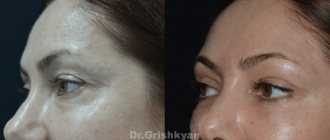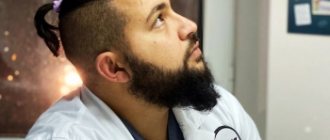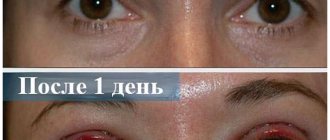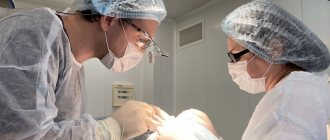A tummy tuck (abdominoplasty) is one of the ten most popular plastic surgeries in the world. With its help, you can remove the sagging “apron” on your stomach, make your waist more expressive and thinner, and also restore your figure to slim.
Abdominoplasty is indicated for almost every second girl after pregnancy and large-scale weight loss. The operation involves removing excess skin and tightening the abdominal muscles.
It is worth noting that a tummy tuck is an effective but serious plastic surgery. It requires increased attention from the patient during the rehabilitation period, as well as strict adherence to the surgeon’s recommendations.
We will tell you about all the nuances and stages of the rehabilitation period after abdominoplasty, what the recovery period is, how long you need to wear the bandage and when you can evaluate the new belly.
How long will it take to recover after abdominoplasty?
Perhaps this question is asked by all patients during consultations. Of course, it is important to correctly calculate the time for recovery after surgery. Rehabilitation always takes place individually. And even the most competent surgeon will not be able to 100% predict the time a patient will need for rehabilitation.
The recovery period after tummy tuck depends on the extent of the operation performed, as well as the individual characteristics of the patient’s body.
Before the operation, based on the complete clinical picture, the plastic surgeon will be able to preliminarily determine the time of planned rehabilitation.
Stages of scar formation
There are several stages of scarring of the damaged area:
- the first lasts about 5-7 days,
- the second lasts up to 1 month,
- the third lasts for 6 months,
- the fourth lasting about 12 months.
The first phase is also called the inflammatory phase. At this time, granulation cells form at the site of the incisions. It is at this moment that the mark from the operation has the most pronounced red or burgundy tint, and also protrudes noticeably above the level of the rest of the skin.
The location of the scars depends on the type of correction.
The second stage, proliferation, is characterized by the formation of a new capillary network at the site of damage, the removal of swelling and redness. During the third phase, over six months, the scar becomes lighter and less prominent.
Finally, at the final fourth stage, the scar after abdominoplasty gradually acquires its normal, natural appearance, becoming light, flat and inconspicuous against the background of normal skin.
Stages of recovery after tummy tuck
The patient must find out from the plastic surgeon all the nuances of future rehabilitation. The following questions will help you create an idea of this period:
- When will I be discharged home after the operation?
- what medications should I take?
- How long to wear the bandage?
- When can you shower?
- At what interval should inspections be scheduled?
- How long should you forget about sports? And accordingly, when you can introduce physical activity.
Recovery period at home
Returning home after surgery, many patients forget that they have an early rehabilitation period in which they need to strictly follow the instructions. They are overwhelmed by everyday life (cleaning, going to the supermarket) - and as a result, uncomfortable phenomena arise.
Don’t forget the basic rules for recovery at home:
- wearing a bandage. This is important to stabilize the result and reduce the risk of postoperative complications. You must wear a bandage on the recommendation of a plastic surgeon. Usually: 2 weeks the bandage is worn continuously; then, after a routine examination, the surgeon gives further recommendations. The total duration of wearing the bandage can be 3-4 weeks. Then you can switch to shapewear.
- restriction of physical activity. This means lifting weights (more than 3 kg), carrying children in your arms, playing sports, fitness, swimming in the pool, visiting saunas and baths. The first time after surgery you need to take care of yourself. However, this does not mean that you need to drop out of social life. Walking and doing light household chores are allowed.
- intimate life. There are no strict restrictions on this issue. Here you should focus on your feelings. And, of course, do not allow pain in the operated area.
- limiting tanning (solariums). It is not recommended to expose the operated area to direct ultraviolet light. You should also refrain from going to the solarium.
- taking medications. They are prescribed only by your plastic surgeon. Coordinate taking medications only with him.
Disturbances in the formation of scar tissue
After abdominoplasty surgery, the suture can develop into one of four types of scars:
- normotrophic,
- atrophic,
- hypertrophic,
- keloid.
Normotrophic, as the name implies, is considered a normal result. Such a scar is hardly noticeable against the background of the epithelial cover and is sensitive.
Atrophic are the result of a slowdown in collagen synthesis. They are light in color, lack sensitivity, located below the level of the skin, as if “pulled in” inside. Hypertrophic ones, on the contrary, seem to protrude above the epithelium, have a noticeable tint and uneven edges. The reason for their appearance is excess collagen against the background of sprains, inflammation and other problems during the rehabilitation period.
Types of scars: a - atrophic, b - normotrophic, c - hypertrophic.
A keloid scar is the most unpleasant defect of all. The formation of keloid scars is possible due to unfavorable conditions during healing. The tendency to form keloid scars is also a congenital feature of some patients. But keloid-type scar tissue is an extremely rare complication of surgery.
Recovery time after surgery
3-5 hours after surgery. The patient in the ward is recovering from anesthesia. The process is controlled by an anesthesiologist. Usually, all patients have a different reaction to general anesthesia, but today clinics use modern inhalation anesthesia (popularly “gas”). Its advantage is the rapid entry into medicated sleep and rapid recovery from it. As practice shows, there is no nausea or hallucinations.
1 day. For 24 hours after tummy tuck, the patient remains in the ward under the supervision of medical staff and a plastic surgeon. If drains were installed during surgery, they are removed. Also, on the operating table, a compression bandage is put on the patient - it must be worn for 14 days without removing it.
The next day after the operation, having received all the recommendations for the rehabilitation period from the doctor, you can go home. Note that 1 day is enough for patients, so longer hospitalization is often not required.
2-5 days. During this period, the patient may be accompanied by discomfort: swelling, stiffness of movement, a feeling of numbness in the operated area and nagging pain. This is completely normal and corresponds to the rehabilitation period. Therefore, it is important to understand pain medications that can buy discomfort.
7-10 days. Gradually, the discomfort disappears, as does the swelling. It is important to maintain physical activity to speed up recovery.
Day 14 Typically, a plastic surgeon schedules an in-person examination to assess the patient’s condition and rehabilitation picture.
3 weeks. The patient's general condition improves significantly.
1 month. Preliminary assessment of the result of a tummy tuck. You can also remove the bandage (as recommended by the surgeon).
How is Abdominoplasty surgery performed?
Abdominoplasty is performed under general anesthesia and, on average, lasts about 3-4 hours. The operation is considered invasive (cavitary) and difficult to perform. The final result largely depends on the skill and experience of the surgeon.
At one time, I came to the conclusion that the high surgical speed of operations has a beneficial effect on the rehabilitation period of patients. Without losing quality, we perform such operations in 1-1.5 hours. Rapid mobilization of tissues ensures their rapid healing (tissues are less injured, less stressed, and the time of the “surgical wound” is reduced). In our clinic, this approach is applied to all plastic surgeries: breast augmentation lasts about 30-40 minutes instead of 3 hours, mastopexy or breast lift takes 2.5 hours instead of 5-6 hours, facelift - about 2 hours instead of the generally accepted 4-5 hours.
S.N. Blokhin
Professor explains the features of his surgical techniques
Operation process.
Swelling after abdominoplasty
Swelling is completely normal after any surgery. This is a kind of “response” of the body. Swelling increases gradually. The peak of swelling after a tummy tuck occurs on days 3-5. The abdomen becomes hard and round, there is a feeling of fullness; swelling can spread to the nearest areas - chest, thighs. Then it gradually subsides. How to deal with this phenomenon? Prevention is a compression bandage, so it must be worn strictly, and the doctor also prescribes decongestants. Also monitor your fluid intake throughout the day and monitor your diet.
Suture after abdominoplasty
Every girl who has decided to undergo tummy tuck is interested in what the seam will look like after the operation and how noticeable it will be.
The seam after abdominoplasty is located in the bikini area and is perfectly hidden under underwear.
Modern plastic surgery makes it possible to make the seam as invisible as possible.
Plastic surgeons use modern “suture bonding” technology. Many people mistakenly believe that the edges of the skin are simply glued together with some kind of superglue. But no glue can hold the skin. The technology for “gluing the seam” is as follows: the postoperative wound must be sutured with threads, then a special mesh is applied to it, and the final stage is the application of special medical glue. The mesh and medical glue act as a plaster that protects the wound.
Advantages of "seam bonding":
- ensuring a tight fit of tissues;
- acceleration of suture healing;
- protection from external influences - bacteria, chapping;
- no additional care for the seam (no bandages or dressings required).
Thanks to the use of glue, the scar after 2 months looks like it did after 6-8 months.
How seams are formed
The formation of scar tissue is a natural reaction of the body to damage caused during surgery. Since abdominoplasty is an abdominal operation, it is impossible to avoid damage during surgical work. Tissues injured during the intervention force the body to launch an inflammatory response and begin producing collagen in the damaged areas.
At the moment of intense collagen production, a red, clearly visible mark is formed on the skin, rising above the level of the rest of the skin. Once the destroyed tissue begins to heal, the excess collagen gradually disappears over time. The formation of a new, normal scar begins, which will remain at the site of the incisions. If the abdominoplasty scar left a noticeable one, it means that the scarring process was disrupted for some reason (suppuration, strong tissue tension, hereditary predisposition, etc.).
Factors affecting recovery time
The duration of rehabilitation is determined by the following factors:
- volume and technique of surgical intervention;
- the age of the patient (the older the person, the slower the healing process);
- the patient’s lifestyle (healthy eating and the absence of bad habits contribute to faster recovery);
- postoperative care - how conscientiously the patient follows the doctor’s recommendations (wearing compression garments, diet, restrictions on physical activity).
Recommendations for patients
- Abdominoplasty will require you to quit smoking two weeks before surgery. Doctors do not advise smoking for at least two weeks after surgery - this will help you recover faster.
- Abdominoplasty involves following a diet. It is quite simple - restriction on solid, fatty, spicy and excessively high-calorie foods. It must be remembered that the preservation of the results of the operation will depend on the diet in the future. New proportions remain forever, but no one cancels healthy eating and sports.
- Avoid lifting heavy objects, including small children.
- And the most important thing: we have already told you, but we will repeat it again - wearing compression garments. After complete healing, the bandage is no longer required.
Any surgical operation is a burden and stress for the body. Give yourself time to return to your normal lifestyle.
What to do if the seam comes apart?
Tummy tuck involves strong tension in the suture area during the rehabilitation period due to the large volume of tissue removed. Surgeons take measures to hold the tissue, but it is impossible to completely protect against discrepancy. The problem may arise due to errors in the choice of suture material, due to the patient’s activity or physiological problems (suppuration, necrosis).
If a stitch breaks after abdominoplasty, you should immediately contact your surgeon, and until your visit, you must follow a number of measures:
- continue to process the edges of the incision according to the instructions received from the surgeon,
- additionally apply a patch to reduce tension,
- do not allow water and especially dirt to get into the seam area,
- It is mandatory to wear compression garments,
- avoid straining the abdominal and abdominal muscles.
These measures will help delay further dehiscence until you see a doctor. Depending on the situation and condition, the surgeon will provide assistance and adjust home care.








